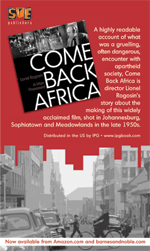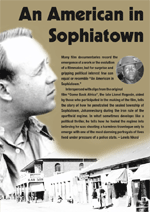
|
Books on Lionel Rogosin
This extraordinary volume of diaries kept during the preparations and filming of Come Back, Africa testifies to that passion. It reveals his inquisitive, searching mind as he tries to understand Africa going through the process of waking up. There are observations and descriptions of life and thinking in South Africa at the turn of Africaís history that should be read by anyone who wants to understand that period. ....In my humble opinion this volume of Lionelís notes and diaries stands in its importance and passion next to On the Bowery and Come Back, Africa as an equal third. Jonas Mekas 2004 Films on Lionel Rogosin
This is an astonishingly alive portrait of a filmmaker staunchly grappling as much with an enthralling medium as with the forbidding obstacles that stood in his way; for Rogosin was confronting unknown terrors in an unknown political environment. What he came out with was a collection of unusual images, which became more than a film. For Sophiatown is dead, it was razed down by the regime to make way for a white residential suburb unashamedly named Triomph (Triumph!); but ìCome Back Africa,î through its unforgettable images, preserves for posterity the memory of what Sophiatown was like! Lewis Nkosi |



